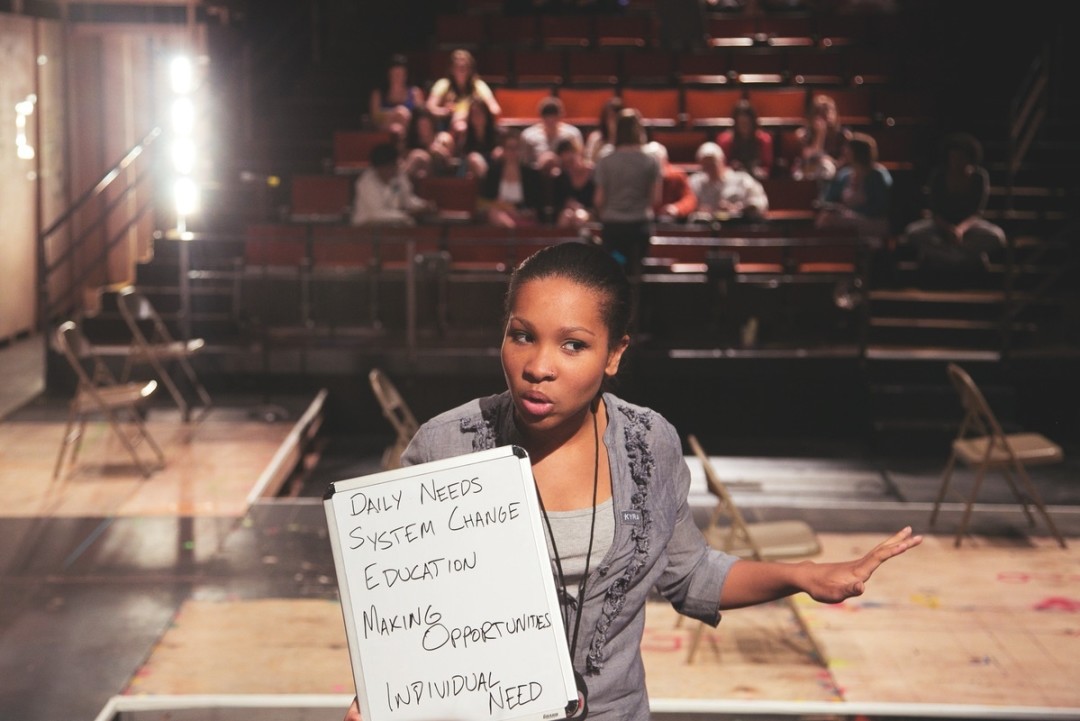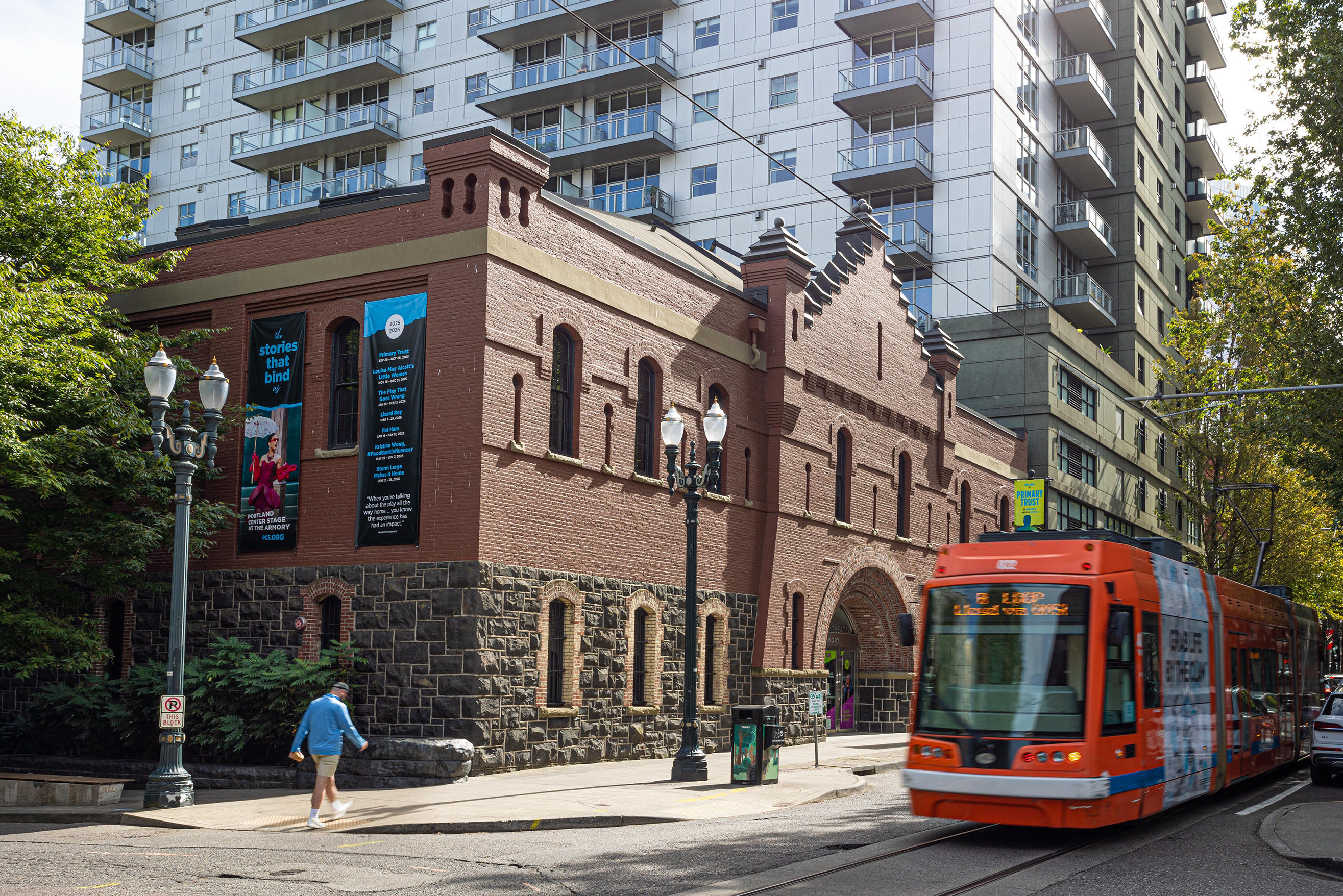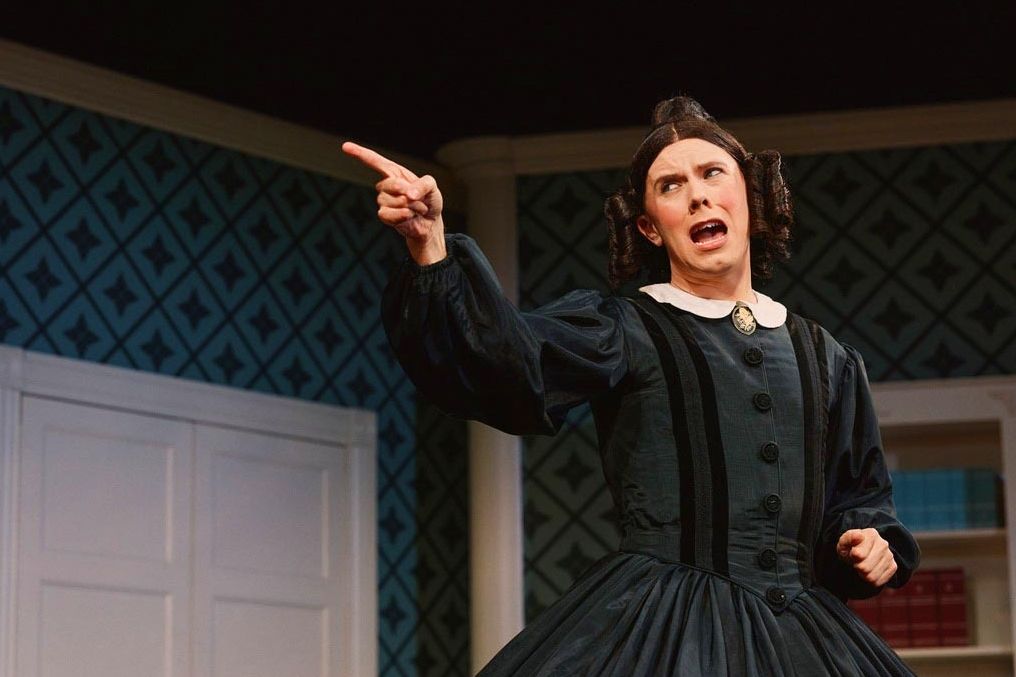How to End Poverty in 90 Minutes (On a Stage)

From its 1999 founding, Portland’s Sojourn Theatre looked to shake up the usual flow of stage dialogue. Take 2010’s On the Table. The first act was the buildup to a wedding with separate, simultaneous audiences in Portland and Molalla. Then Sojourn bused both groups to a central location for a shared meal and conversations about how to save the marriage and heal the urban-rural divide.
After five years of out-of-the-box shows around the country, Sojourn returns to town with the world premiere of How to End Poverty in 90 Minutes (with 99 People You May or May Not Know) in collaboration with Portland Playhouse. On the line: $17,000 and audiences’ understanding of poverty policy and its discontents.
“We wanted to host a conversation about poverty where we invite different perspectives and ideologies into a room to wrestle with this often silent issue,” explains founder Michael Rohd, who left Portland in 2007 to teach at Northwestern University, where he developed the show.
Predictable community theater this is not. Preproduction began like an academic endeavor: in-depth research, partnerships with shelters, and interviews with low-income individuals. The research was then transformed into a series of theatrical vignettes, songs, multimedia, and other stage spectacle. Between scenes, the six actors divide the audience and facilitate small group discussions debating five approaches for tackling poverty.
To keep the theater from becoming an echo chamber, Rohd introduces two wild cards. First, he “designs” audiences through partnerships with 74 community groups, from chambers of commerce to unions to nonprofits, to bring 25 people from diverse backgrounds and ideologies to each show as part of the audience. Small groups could include homeless teens, downtown business owners, or both. Then he gives the conversation real stakes: by curtain call, the audience must decide which approach will receive $1,000 from the evening’s ticket sales ($17,000 total over the run).
One recent report estimated that 17 percent of Multnomah County residents live below the official poverty line but that nearly twice that, or about one-third of the county’s more than 760,000 people, can’t meet basic needs. “These issues become a part of the lifeblood of the city,” says Rohd. But he sees a disjunction in Portland “as large as I’ve seen anywhere” between those who see the issue and those who ignore it. Just as On the Table literally spanned geography, Rohd hopes this show will help bridge that distance.




